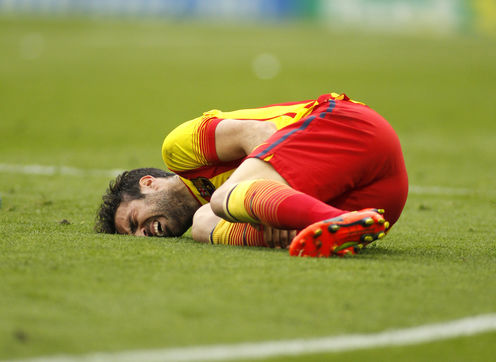Patellar tendonitis, also deemed Jumper’s knee, is a painful and uncomfortable condition caused by the kneecap veering off the patellar grove. The condition is fueled by repetitive movements and is typical among athletes. If not treated at the earliest, the continued stress on the patellar tendon can cause tears and aggravate the situation. Before examining the utility of knee braces as a remedy for Jumper’s knee or Patellar Tendonitis, let us examine the various causes and symptoms of the condition.
CAUSES OF PATELLAR TENDONITIS
- The most specific causative factor of patellar tendonitis is the overuse of the tendon, as seen among athletes. People who engage in repetitive movements like running, skipping, and jumping are highly susceptible to the condition. As such, recurring movements can cause micro-tears as well as collagen degeneration in the tendon and further accelerate Jumper’s Knee.
- Sudden alterations or changes to the amount or intensity of workouts can increase patellar tendonitis.
- Running on hard surfaces is another reason for the condition.
- People with weak muscles around the knee are also vulnerable to Patellar Tendonitis.
- Less common causes of the condition include genetic predisposition or direct injury to the patellar tendon.
- Lastly, it is noteworthy to mention that Jumper’s Knee can also be caused by not taking proper care of an injury to the tendon.
SYMPTOMS OF PATELLAR TENDONITIS
Some of the most typical symptoms of the condition are –
- Pain in the front of the knee, which is where the patellar tendon is located
- Sharp pain during physical activities like running or jumping, which even persists while working out
- Tightness of the knee with a ‘squeaking’ sensation when in motion
The diagnosis of a Jumper’s Knee is reasonably straightforward, and call a doctor has to do is press on the affected area. To ensure that the patellar tendon is not degenerating and simply an inflammation, your physician might recommend an MRI or an X-ray. Now that we have talked at length about the nitty-gritty of Patellar Tendonitis, let us try and answer the looming question of whether knee braces can assuage the condition.
DO KNEE BRACES HELP WITH PATELLAR TENDONITIS?
Many patellar tendonitis patients require the use of a brace to stabilize the patellar tendon. The knee braces work by exerting pressure on the tendon and help mitigate the pain. Patellar tendon braces often come in the shape of knee straps, although there are a number of different options available. Studies reveal that anywhere between 70 to 80 percent of people wearing a knee brace for patellar tendonitis report improvement in both acute and chronic cases of the condition.
CONCLUDING THOUGHTS
In conclusion, knee braces are one of the most feasible remedies for patellar tendonitis. Most cases of the condition can be dealt with efficiently, without surgery. However, it is crucial to rest properly so that the injured or inflamed tendon can recuperate. In addition to knee braces, some other remedies for patellar tendonitis include cold therapy, pain relief, stretching, and rehab exercises.






